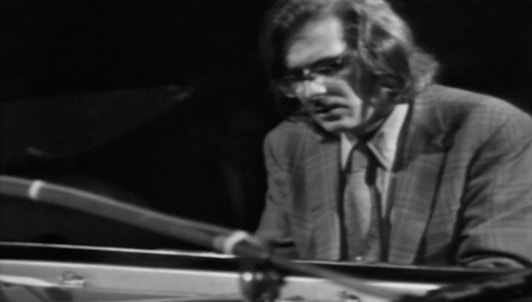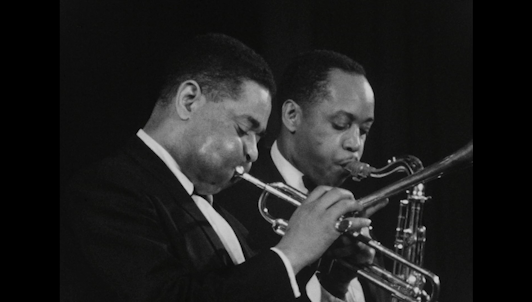There is a sense that, at the time of this 1971 concert in Paris, Ahmad Jamal represented something of a hidden gem to French audiences. A voice over during the concert states as much, arguing that Jamal was relatively unknown in France, despite having become "one of the most famous jazz stars" in the United States. "Imitated by nearly all modern pianists," the speech continues, his style was a more skilful synthesis than that of "Bud Powell, Erroll Garner and Milt Buckner." Indeed, it was in small ensemble formats that he cemented his legacy, working for six decades as a supreme leader and sideman alongside artists like Stanley Turrentine, Yusef Lateef and Ray Brown.
Here, he is joined by Frank Gant on drums/ percussion and Jamil Nasser on double bass, both artists he formed enduring partnerships with in the second half of the 1960s. Jamal joined the jazz sphere on the back of swing legends like Dizzy Gillespie and Charlie Parker. At that time, blinding speed and dazzling virtuosity were in vogue, and in response he came to focus on space, touch and subtle shifts in tempo, becoming a pioneer of "cool jazz" in the 50s. His influence on Miles Davis is well documented, and though history never granted him mainstream icon status, he is treasured among musicians, with the poet and music criti A.B. Spellman saying "Nobody except Monk used space better and nobody ever applied the artistic device of tension and release better. With a style taken both from contemporary jazz and classical music, Jamal paved the way for future greats like Bill Evans, Herbie Hancock and McCoy Tyner.


